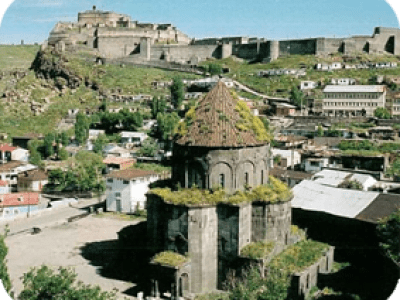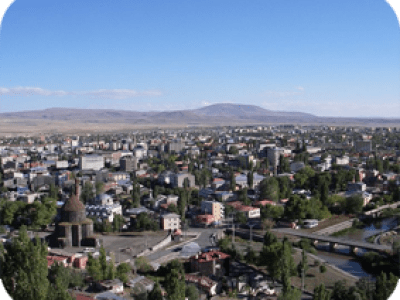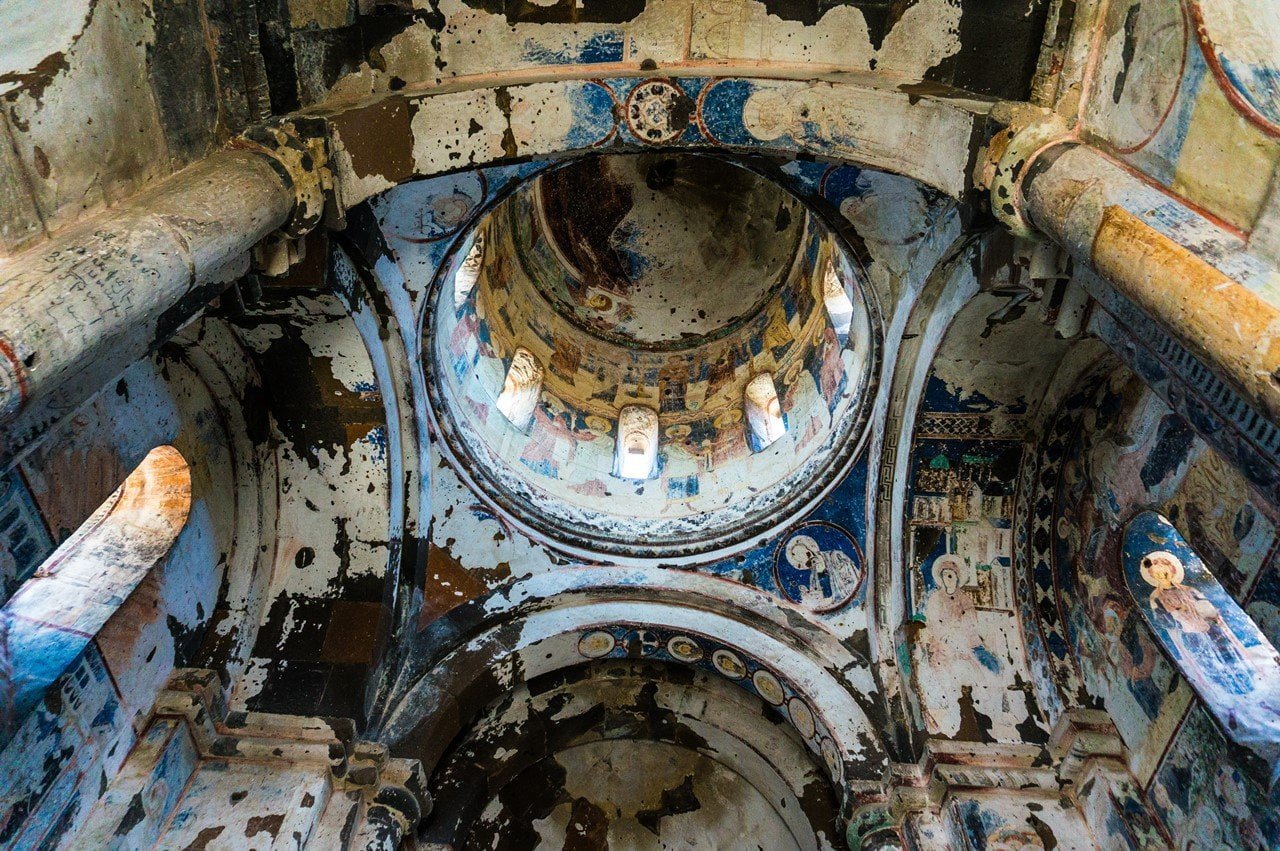KARS
Kars, standing at an altitude of 1,750 meters, has played an important role in Turkish history and was at the center of the Turkish-Russian War. The Russian legacy can still be seen in much of the town’s architecture. The lower city unfolds at the foot of an impressive 12th century Seljuk fortress. Nearby, the Havariler Museum (the 10th century Church of the Apostles) reveals a curious mixture of architectural influences. Bas-reliefs representing the twelve apostles, in rather stiff and awkward poses, ring the exterior drum of the dome. The Archaeological Museum houses beautiful wood carvings, an excellent collection of coins found in the surrounding region, as well as many ethnographic items relating to eastern Turkey. Kars is particularly known for its distinctive kilims and carpets, and it retains a strong heritage of folk dancing. Visitors always seem to enjoy this traditional entertainment. On the mountain pastures, villagers produce excellent Kasar cheese and delicious honey.
ANI – SARIKAMIS
About 42 kilometers east of the city on the ancient Silk Road, the medieval city of Ani (Ocakli) lies mostly in ruins. Impressive fortified walls still encircle the ruins of numerous churches, mosques and caravanserais. Sarikamis (53 km southwest of Kars) is a ski center with resort hotels set in a scenic pine forest. The Kür river divides Ardahan and separates the ancient part on one side and the new city on the other. A 16th century castle built by Sultan Selim the Grim, one of the most stately citadels in Turkey with 14 towers and a span of 745 meters, stands in the old part of the city. To the north of Ardahan via Posof lies the Türkgözü border gate which is now open for travel through the republic of Georgia.





0 Comment